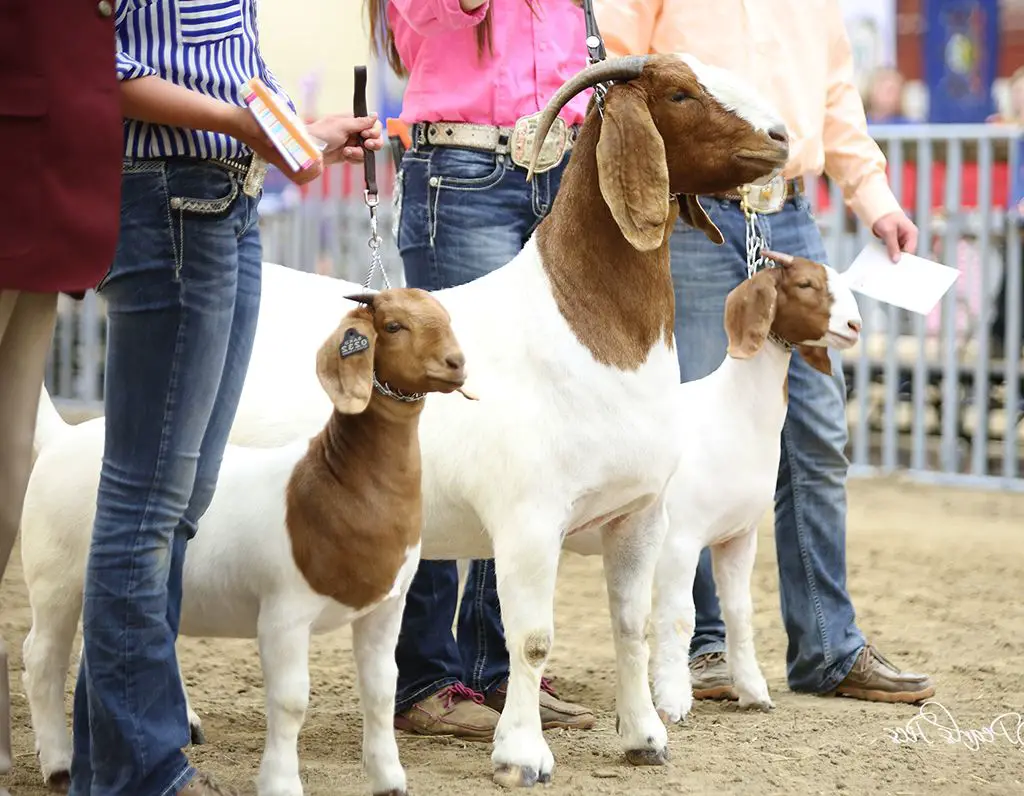
In this beginner’s guide, we explain how you can get into the glam biz of raising show goats.
Table of contents
- What Are Show Goats?
- Show Goat Breeds
- Show Goats Prices – How Much Do They Cost?
- How to Raise Show Goats
- How to Raise a Winning Show Goat
- How much food does it take to raise a meat goat for show?
- Building Muscle in Show Goats
- Boer Show Goats – What to Know About Showing Boer Goats
- Showing Dairy Goats – What You Need to Know
- Show Goat Supplies – Supplies You’ll Need to Show Your Goats
- Show Goat Exercise Equipment
- Treadmill for Show Goats
- Show Goat Feed
- Show Goat Feed Program
- Best Show Goat Feed
- Show Goat Feed Recipe
- How to Show a Goat
- Goat Showing Tips
- How to Show a Goat at the Fair
- Showing Goats in 4H
- Showing Nigerian dwarf goats
- Pygmy Goat Showing
- Show Goat Pictures – Photos of Award-Winning Show Goats
- Purina Food Video
What Are Show Goats?
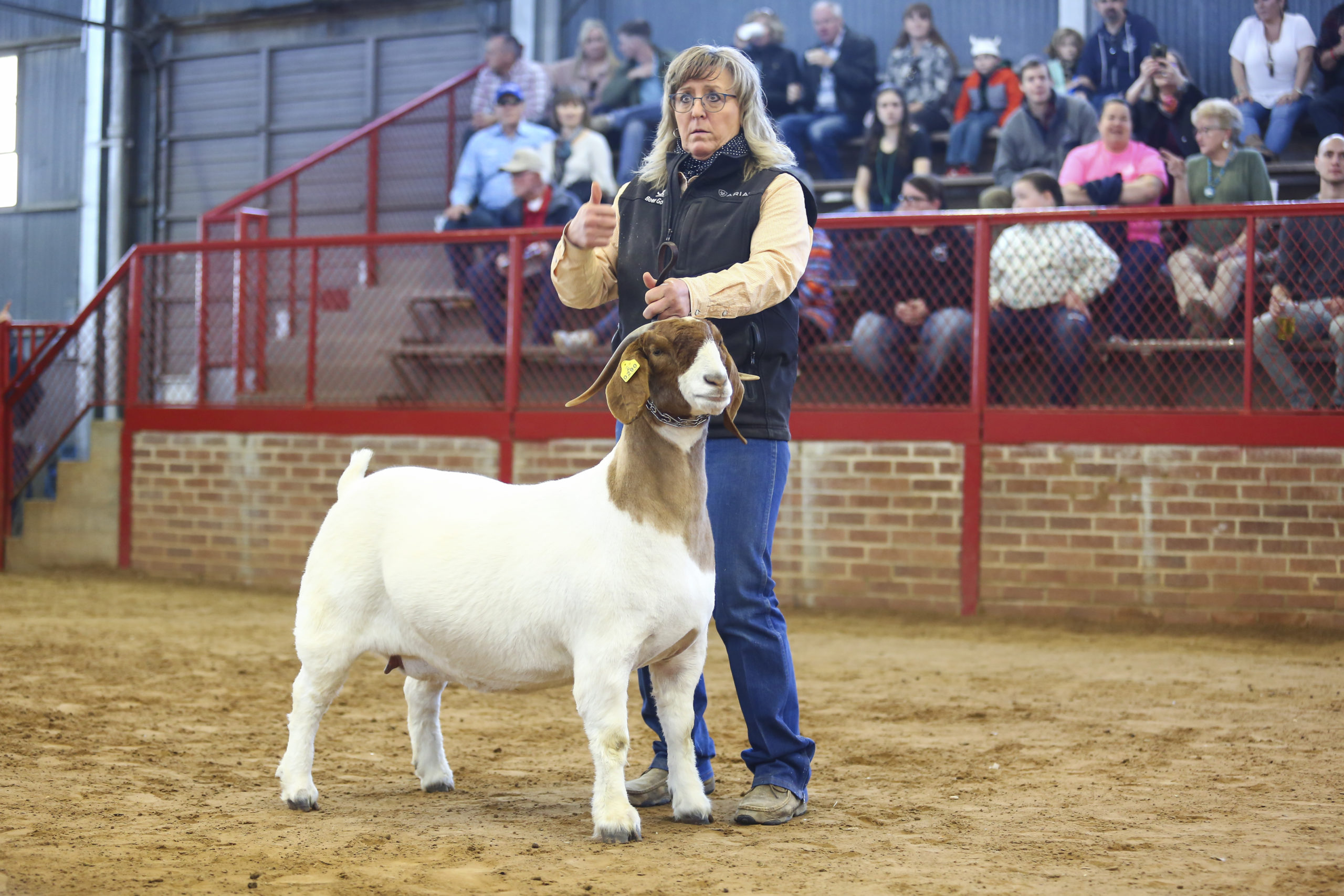
You probably already know this (because you’re reading this guide!) but show goats are goat breeds that are raised to be “showed” at agricultural fairs.
The first recognized Show Goat Fair was at Illinois State Fair in 1946.
Shows put goats in the public eye thus improving their public image. Shows also give goat breeders opportunities to be recognized and an opportunity to talk with other breeders. The best show goat wins many prizes. You can show both dairy goats and meat goats.
Show Goat Breeds
Below I will describe some of the best show goat breeds currently in the United States:
Dairy Show Goats
Alpine Goats

These goats originated from the French Alps and were introduced to the USA in the 1920s. They are beautiful animals with a black coat with beautiful white markings. They have erect ears and a straight muzzle line. Ideal height is an average of 30 inches for does and 33 inches of bucks. The breed is noted for its high milk production. They weigh an average of 170lbs and 135lbs for bucks and does respectively.
Saanen Goats
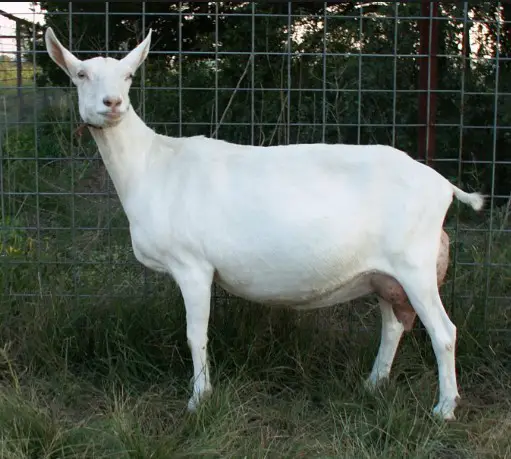
These goats originated in the Saane Valley in Switzerland. They reach a height of 90cm and 80cm for bucks and doe’s respectively. A mature Saanen goat male weighs about 165 pounds while a mature female weighs about 110-130 pounds. White to pale cream in color, they have black spots in the nose and udder, have erect ears and pointed facing forward. They are heavy milk producers and are the most common dairy show goats.
Nigerian Dwarf Goats
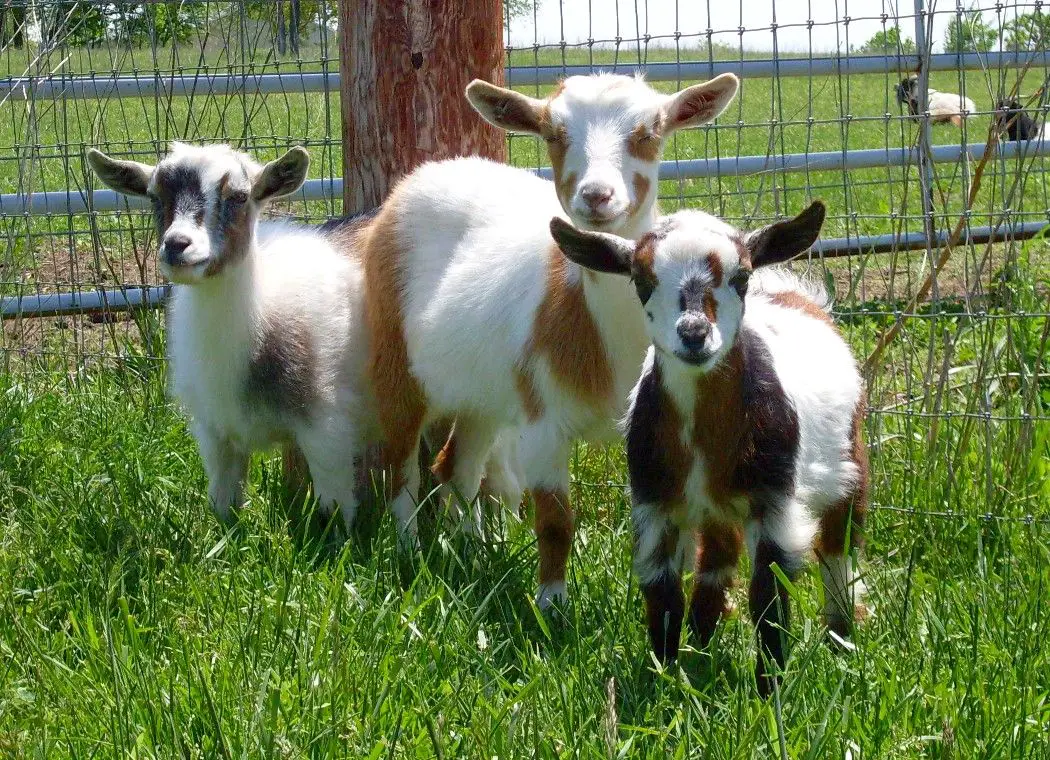
These goats were imported to the United States from West Africa in 1930s to be used in exhibitions. They can produce 700 pound of milk annually and weigh around 80 pounds at maturity. Just like pygmies, they are a small dairy goat breed with a height of 28 inches at the shoulder. The Nigerian Dwarf is recognized as a show, pet and dairy goat.
Toggenburg Goats
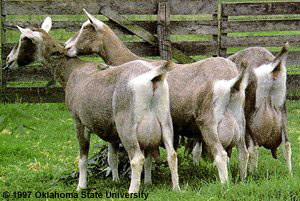
Originated from Toggenburg valley in Switzerland. The breed is medium size in appearance. Does weigh at least 120lbs and bucks 140lbs. They are noted for their excellent high milk production and udder development.
The scoreboard for dairy show goats provided by the ADGA assigns the following; mammary system 35%, dairy strength 20%, general appearance 35% and body capacity 10%.
Meat Show Goats
Boer Goats
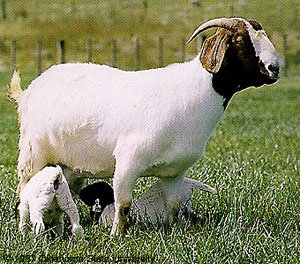
The South African Boer goat is the most prevalent breed of goats because of its high fertility and capacity to breed in harsh climatic conditions. They have a color pattern of brown and white and have lop ears. A mature buck weighs 135kg while a doe weighs 100kg. The Boer is the most common shown meat goat breed. The scoreboard for meat show goats is as follows, for bucks 55% is allocated for general appearance, 30% for dairy strength in does and 15% for body capacity.
Show Goats Prices – How Much Do They Cost?
Show goats in the US tend to range from $75 to $300.
This cost depends on factors like age, temperament and sex. Does range form $250-$300, Bucks sell at $150-$250 while weathers are the cheapest, sold for around $100.
How to Raise Show Goats
Goats are great animals to keep in a farm. They require little maintenance and are popular in commercial use and in the show ring.
Raising show goats is totally different from raising goats for commercial purposes that is milk, meat and fiber production.
When raising show goats, you have to have a good breeding and kidding program. You have to breed the animals so that new kids may be ready for the next show time. Breeding is also key since it helps you have a goat that fits the judge’s specifications for you to win prizes.
It is also important to advertise your business if you are raising show goats. Advertising is crucial since it helps people see what you have got and also you can sell the show goats individually to buyers.
How to Raise a Winning Show Goat
You have to take into consideration the following basic facilities and management techniques if you want to raise a winning show goat.
Basic care and management for show goats:
- Vaccination: vaccination against clostridium perfringens type C and D and tetanus is usually recommended. Contact your Vet to get further information about vaccination requirements for your herd.
- Hoof trimming. Overgrown hooves should be trimmed from time to time. Overgrown hooves accelerate hoof diseases that cause lameness.
- Nutrition and Feeding. Goats need to have access to quality pasture that they can browse in. This will provide enough nutrients that will aid in good performance and health. They should also have access to clean water throughout. You can also supplement their feeds with grains, quality hay like alfalfa. You need to maintain the condition score of (3-4) with proper feeding management.
- Health inspection. Goats have to be inspected for any abnormality, body secretion and behavior. A goat that is unwell should be isolated and treated separately from the rest of the herd.
- Body condition score. Body score ranges from 1 to 5. Condition score 5 indicates goats are very fat, as there is a thick layer of muscle and fat between bones and skin. Score 1 indicates goats are too thin and very lean. There is not much fat and muscle between bones and skin. Try to maintain a scale of 3-4.
Basic facilities required for your show goats
- Pasture. Goats get the required nutrients from the grasses, plants and weeds they browse in pastures. If you have no pasture site, feed your goats quality hay and supplement their feeds with grains.
- Feeders. Feeders need to be above the ground in a way that goats cannot step or defecate on the feeds. The feeders need to be kept clean. Frequent cleaning minimizes health problems arising from dirty feeders.
- Shelters and Fencing. Goats need shelters to protect them from harsh weather conditions like winter and heavy rains. Goats don’t like to be wet. A fence helps protect your animals from roaming freely and keeps them safe from predators such as stray dogs, mountain lions and bears.
- Weighing facility. Determining the body weight of goats is important since it is required when estimating the selling price, calculating medical dosage, assessing performance and putting in show category.
- Handling facility. A handling facility helps in catching goats so as to perform vaccination shots, body inspection and so on.
How much food does it take to raise a meat goat for show?
Meat goats for shows should be fed a grain based diet with minimal amounts of hay. Feeding them a grain based diet improves body composition by adding muscle and skeleton. Recommended Nutrients Requirements for show goats are:
- Protein 15-17%
- Fat 3-4%
- Fiber 10-15%
Feeding 2 to 3 days per day helps maintain a healthy rumen and encourage appetite.
Building Muscle in Show Goats
A show goat should have a smooth muscle tone. Building muscle is a basic process but essential for your goat to win honors. Follow the following steps in order to add muscle to your show goats.
- Weigh the goats. Overly thin and heavy goats don’t score well. Weighing the goats will also help you know the progress of muscle building routine.
- Deworm. Worms prevent the goats from absorbing required nutrients. So contact your vet and he will advise on the available goat wormer you can get.
- Move the goats to a large space. The more space they have, the more they will exercise. Large pens encourage the goats to walk.
- Feeding. Feed the show goats with a high protein diet. Increased protein helps build more muscle. Small amounts of hay will provide enough forage for the animals.
- Place a halter on your goats. This will help your goats to get used to wearing it. Training the goats to wear halters will help prevent resistance when the Show starts.
- Take your goats for exercise. Walking and jogging allows muscles to stretch and build up gradually and having a smooth appearance.
Boer Show Goats – What to Know About Showing Boer Goats
Management of your Boer goats is key to have success. Make sure to provide daily nutrition and care needed to produce a winning Boer goat. Below is some key information about Boer show goats. And what to look for if you want your goat to be the champion.
Buck
- The ears should be broad, smooth and medium size hanging downwards.
- The teeth should be strong and in the correct position.
- Eyes should be brown in color and soft.
- Tail must be straight, growing out of the dock.
- The horns should be round, solid, dark and curved backwards.
- The rump should be broad and long.
- The head should be large, strong and a nose that is slightly curved.
Doe
- Udder should be well attached with two teats well separated.
- The back should be long, straight and fury.
- Tail must grow out of the dock
- Tail must grow out of the dock
Showing Dairy Goats – What You Need to Know
Showing dairy goats is based and evaluated under four major categories:
- Appearance
This includes the structure of the head, shoulders, back, feet and legs. A winning dairy goat should have a beautiful general appearance.
- Dairy strength
This includes the dairy productivity of the goat. It should be followed by flatness of the bone and openness of the ribs
- Mammary System
The teat size, teat placement udder shape and placement are very important. These are important because they indicate a long and productive life
- Body Capacity
This entails the depth and width of body ensuring strength and vigor
Show Goat Supplies – Supplies You’ll Need to Show Your Goats
The following are the supplies you will need to have when showing your goats.
- Goat show box- This box contains everything you need in from Shampoo, hoof trimmers, guards, show leads, horn conditioner, washing boots, show clip, sand paper, combs, clippers etc.
- Goat show collars- collars allow for easier identification and attaching a lead if the goat needs walks. You can get the following collars for your goats.
- Weaver leather goat collar
- Weaver leather Brahma Webb goat collar
- Nickel Plated Chain
- Weaver Leather Plastic goat chains
- Goat show halter-Halters help when walking your goat, milking it or even hoof trimming. They are a safe way of training your goats. You should train your goat with a halter from an early age so that they can transition to collars easily. You can buy the Weaver Leather Goat Training Halter.
- Goat show leads- leads allow you to walk your goats when training and exercising them. Leads may be attached to collars or halters
- Goat show chains- find a chain that is comfortable for both you and your goat.
- Show goat blankets– show goat blankets are a good way to preserve the goat’s coat before show time
- Show goat supplements- supplements enhance the appearance and muscle definition of the goats. They may be pellet feeds which are readily available in the market.
- Show goat drench- drenching your goats regularly keeps them free from parasites. The medication is syringed into the goat’s mouth. Some wormers for goats include Safe Guard, Cydectin and Ivomec. Most importantly, talk to your vet to get adequate information on the best wormer.
- Goat showing shirts- they are unique clothing that may catch the eyes of people but also keep your goat’s coat clean after grooming.
Show Goat Exercise Equipment
Show goats must be exercised in order to be competitive. Ways of exercising goats may include treadmill, hurdles and walkers.
- Hurdles- jumps will build muscle. Hurdles should be the same height as the goat’s chest or even slightly higher than he can walk over.
- Walkers- walk your goat daily. It helps the goat build more muscle, stay fit and ultimately handle better for judges.
Treadmill for Show Goats
Treadmills are intended to build muscle while a walker will tone muscle. There are many goat treadmills available on the market.
Show Goat Feed
Feed the show goats with a high protein diet. Increased protein helps build more muscle. Small amounts of hay will provide enough forage for the goats. The Nutrients Requirements in the feeds should be as follows:
- Protein 15-17%.
- Fat 3-4%.
- Fiber 10-15%
Show Goat Feed Program
Find a balanced ration when feeding your show goats. Start feeding the goats with quality alfalfa hay top-dressed by the purchased feed. Then after three to four days you can change to the balanced ration of your choice, decreasing hay. Hay should be eliminated during the latter stages of your feeding program to prevent goats from getting a large stomach:
- Feed a free choice mineral
- Feed 2-3% of the goat’s body weight
- Feed the goats two to three times a day. It helps maintain a healthy rumen and encourage appetite
Best Show Goat Feed
Feeds with high proteins are the best for your show goats since protein helps in building muscle. Below are some show goat feeds commonly used by producers in the United States:
Show Rite Goat Feed
Show Rite is a feeds brand designed to provide your show goats with modern and technologically advanced nutrition. Show Rite goat feeds include:
- G.O.A.T.R20
- Herd Builder R20
- Advanced Plus R20
- Fat”N” Sassy R20
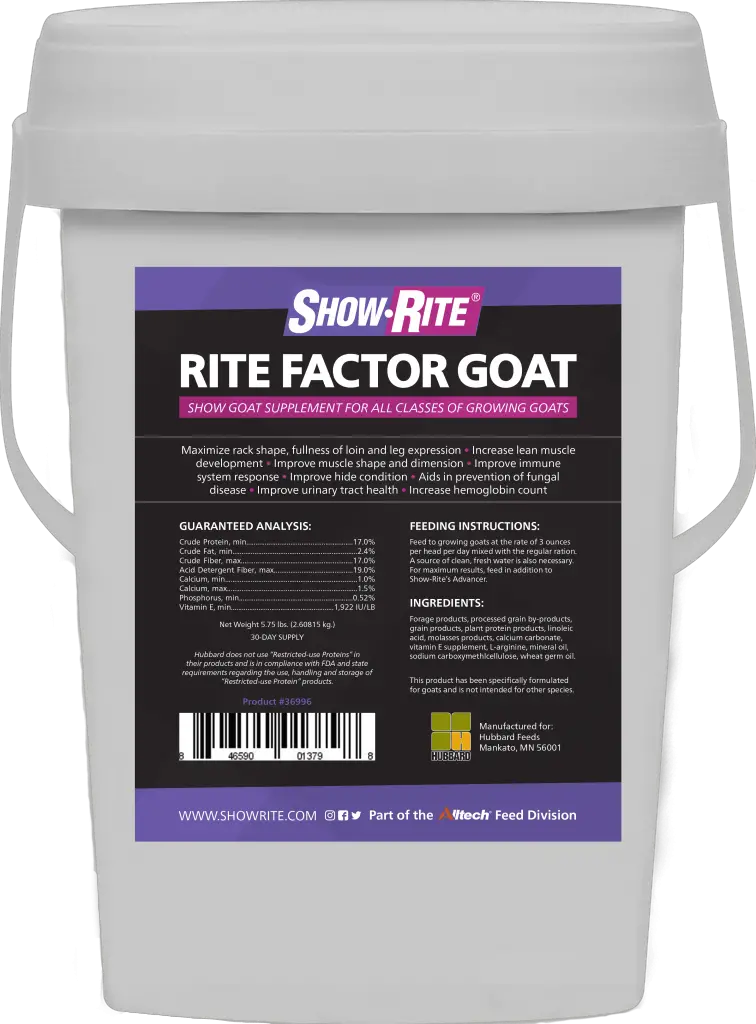
Purina Show Goat Feed
Purina feeds offer protein fat and fiber nutrients in pellet forms which give your goats an edge in the competition. They have a balanced nutrition that supports performance, health and proper growth.
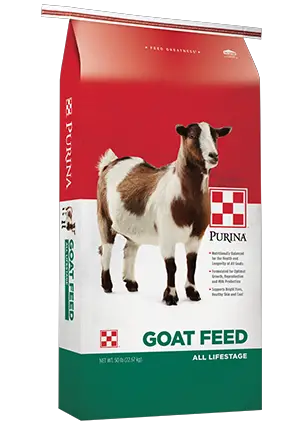
Show Bloom for Goats
You can feed your goats show bloom 90 days prior to the start of the show for better results. You can feed 3 oz Show Bloom per day. Goats must have good diet to reach full genetic potential. Show Bloom supports growth and overall condition of the show goats.
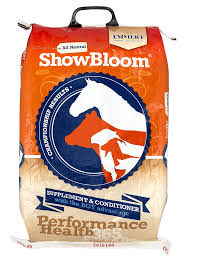
Show Goat Feed Recipe
A good feed recipe is one that you have mixed for yourself meeting the requirements you want for your show goat. Below is a feed recipe you can use to feed show goats:
- 10 parts oats.
- 5 parts rice bran.
- 6 parts alfalfa pellets.
- 3 parts rolled barley.
12% min protein, 4.5% min fat, 20% max fiber.
How to Show a Goat
Presentation makes a huge difference when showing goats. Be familiar with the following tips during the show:
- Arrive in time and sign in.
- Watch and study the show ring.
- Be aware of your number and be ready when you are called.
- While walking the goat, hold the leash with your right hand while keeping the goat on your right side unless told otherwise.
Goat Showing Tips
- Clean and groom your goat before the show.
- Dress appropriately.
- Remain calm even when your goat is misbehaving.
- Keep your eyes at the judge at all times.
- Practice walking your goat before the show starts.
- Keep your goat properly set up.
- Do what the judge asks.
How to Show a Goat at the Fair
In many shows, the goat’s cleanliness, neatness and physical appearance are generally considered by judges. The following are key when showing a goat:
- Stay aware of where the judges are.
- You should always be in a standing position.
- When the show starts, square the legs closest to the judge first then place the hind legs. Keep the goat’s body and neck straight.
- Keep the head high and make a proud position using the collar.
Showing Goats in 4H
- Review the rules of the specific show. Ask your 4H leader to provide you with the show guidelines
- Get a tag and ID with the board of animal health. The tag verifies you are the goat owner and ID assures that your goat is healthy
- Present your goat. Do what will be asked of you by the judges. Stay calm at all times.
Showing Nigerian dwarf goats
Nigerian Dwarf Association goats are gentle, easy to handle and lovable and are great animals for children to show in 4H. Bucks are no more than 23 inches and does not more than 21 inches. Nigerian dwarf goats can blend with other animals. Even breeding bucks are gentle to handle and can be shown.
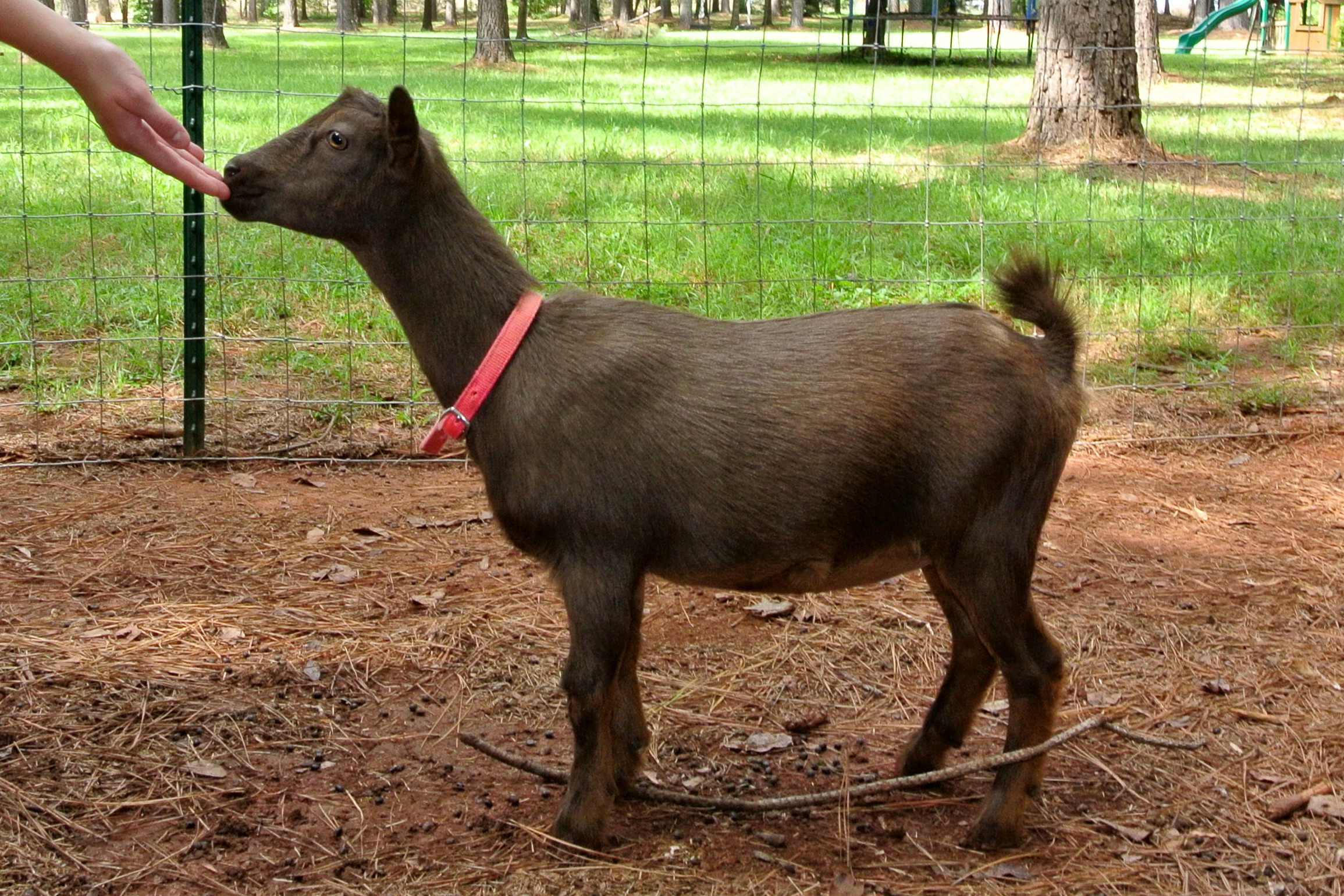
They need basic care like Hoof trimming, vaccination, worming. This help in having healthy Nigerian dwarf goats at shows.
Most feeders feed a 16-18% protein feed to build muscle in the Nigerian Dwarf Show goats.
Pygmy Goat Showing
Pygmy goats can be shown because they are easy to raise and are gentle. They can also be purchased relatively in expensively. Pygmy goats can be raised similarly to other showing goats.
Due to their nature, pygmy goats are raised by children for events like 4H. A mature buck stands at 26 inches and a doe stands at 23 inches.
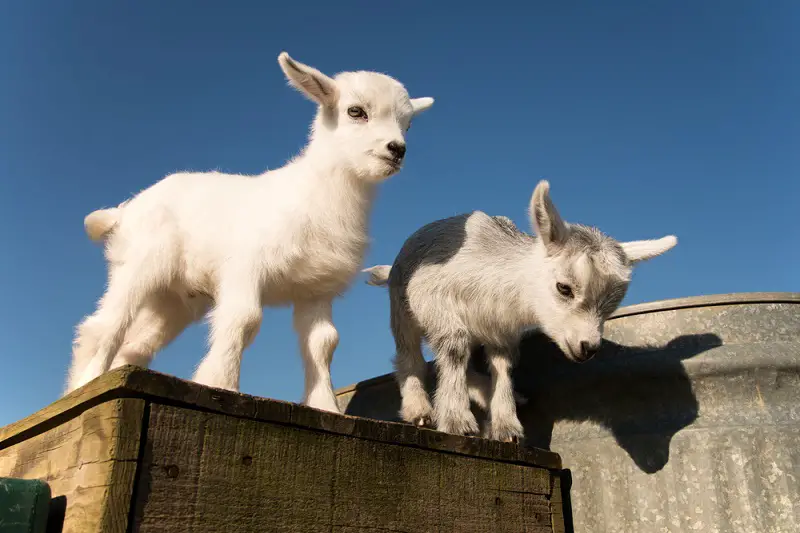
Show Goat Pictures – Photos of Award-Winning Show Goats

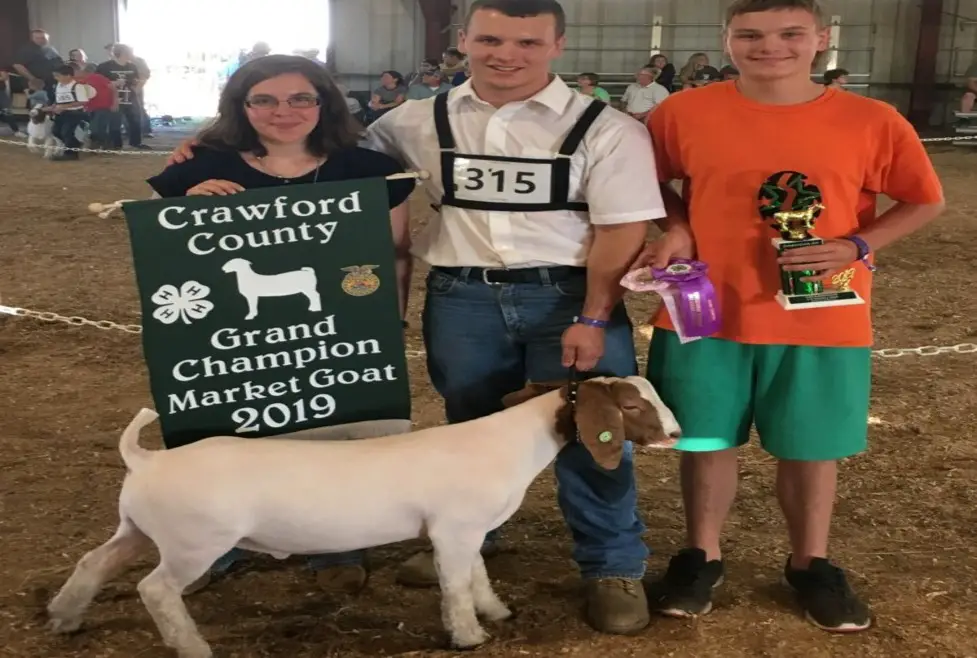

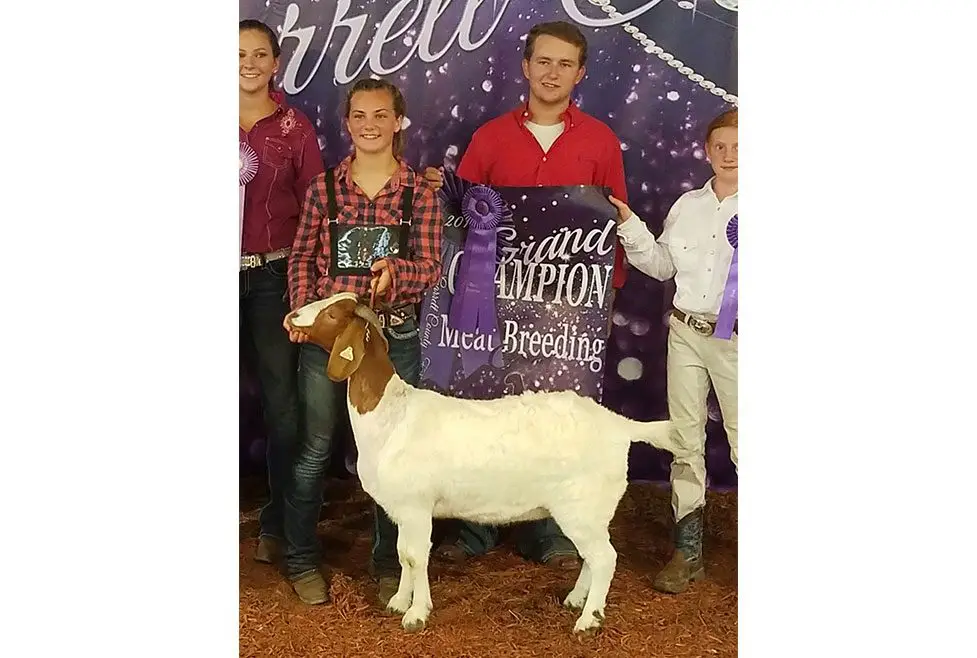
Photo Credits: Winners – Umbarger Show Feeds
Purina Food Video
Purina Show Goat Food for Beginners:
References




